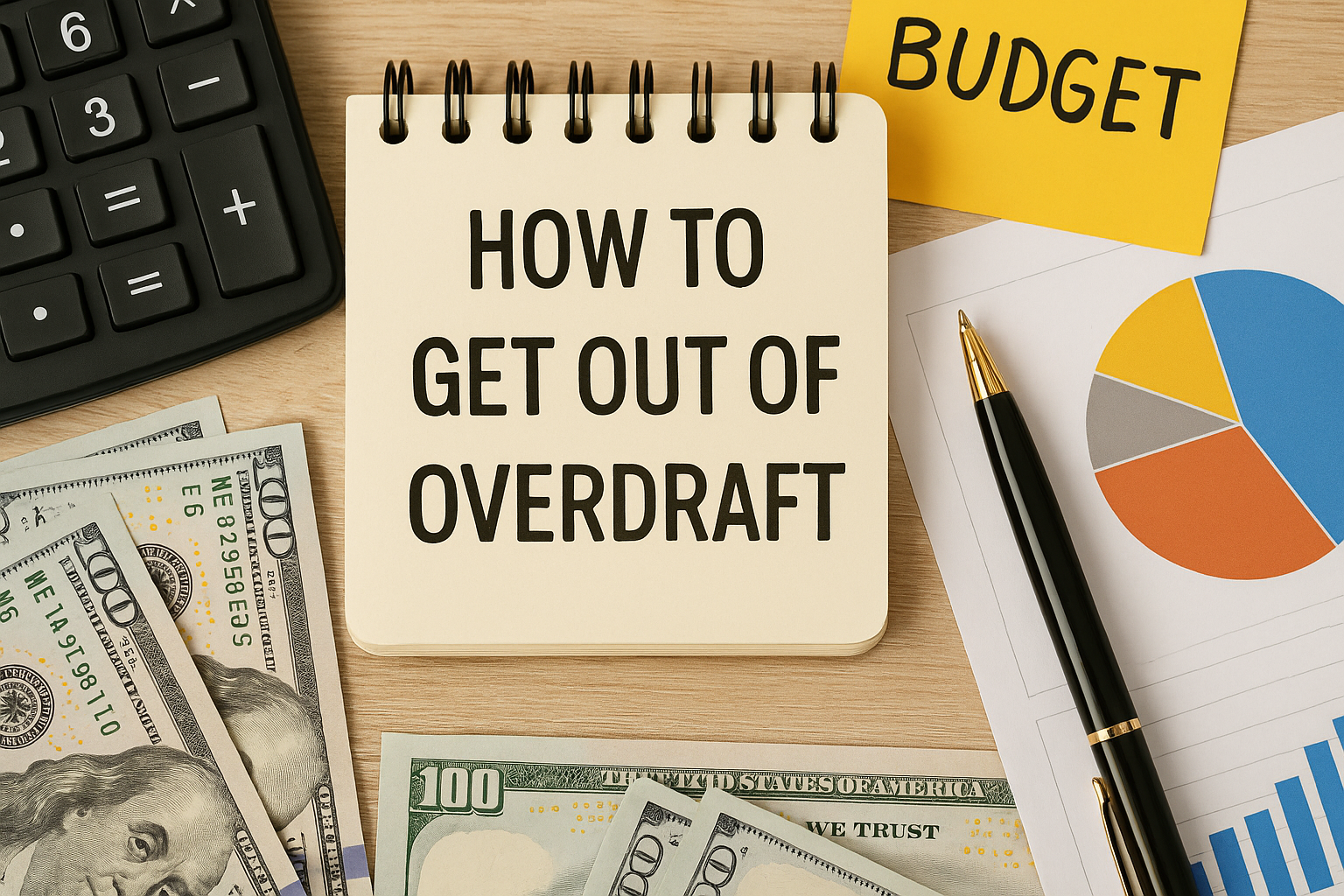Living in overdraft can feel like you’re constantly one step behind. Every paycheck disappears quickly, and bank fees just keep piling up. But escaping this cycle is possible—with the right plan and mindset.
This guide will show you practical, stress-free ways to get out of overdraft and take control of your financial life.
Understand What Overdraft Means
An overdraft happens when you spend more money than you have in your bank account. The bank covers the difference, but usually charges you a fee or daily interest.
It might seem helpful in the moment, but long-term use of overdraft can quietly drain your income and trap you in a debt loop.
Find Out How Much You Owe
Before you can fix the problem, you need to know where you stand. Log into your online banking and check:
- How much you’re in overdraft
- How much you’re being charged in fees or interest
- How often you use your overdraft
Write these numbers down—it’s easier to make a plan when you have clear facts.
Stop Using the Overdraft as Extra Income
It’s important to change how you view your overdraft. It’s not part of your income. It’s debt.
Try to stop relying on it for daily expenses. This may require tough choices at first, but it’s the first step toward lasting change.
Build a Mini Emergency Fund
Yes, even if you’re in overdraft. Setting aside just a small amount—$10, $20, or $50—can give you a buffer and prevent deeper overdraft use.
Keep this cash separate (in an envelope or a basic savings account) so you’re less tempted to spend it.
Track Every Dollar for 30 Days
Write down everything you spend for one full month. Use an app, notebook, or spreadsheet—whatever works best for you.
You’ll probably notice patterns: daily coffee, takeout, or forgotten subscriptions. These small leaks are key areas to cut and redirect toward overdraft repayment.
Reduce Non-Essential Spending
Now that you know where your money is going, it’s time to trim the extras. Focus on categories like:
- Eating out
- Streaming services
- Online shopping
- Premium subscriptions
Even a temporary pause on non-essentials can free up cash to pay down your overdraft faster.
Set a Payback Goal
Set a realistic target for getting out of overdraft. Break it into small, weekly or biweekly goals. For example:
- Goal: Pay back $300 overdraft
- Plan: Pay $25 every week for 12 weeks
Smaller targets are less overwhelming and help you stay motivated.
Use Windfalls Wisely
Did you get a tax refund, cash gift, or extra income? Use part of it to reduce your overdraft. Even small lump sums can make a big difference.
Avoid the temptation to spend it all—use it to push yourself closer to a zero balance.
Talk to Your Bank
Don’t be afraid to contact your bank. Ask if they can:
- Lower your overdraft interest
- Waive a few recent fees
- Set up a structured repayment plan
Some banks are more flexible than you might expect—especially if you show you’re serious about changing.
Celebrate Small Wins
Each time you reduce your overdraft—by $20, $50, or $100—celebrate it. Write it down, track your progress, and remind yourself: you’re moving forward.
Progress may feel slow, but consistency will get you there.
Take Back Control of Your Account
Escaping overdraft isn’t about shame or stress—it’s about making steady progress toward freedom. With a plan, patience, and some small lifestyle shifts, you can build financial breathing room and break free from the cycle.
Start small. Be consistent. And believe that you’re capable of taking control of your money—one step at a time.
